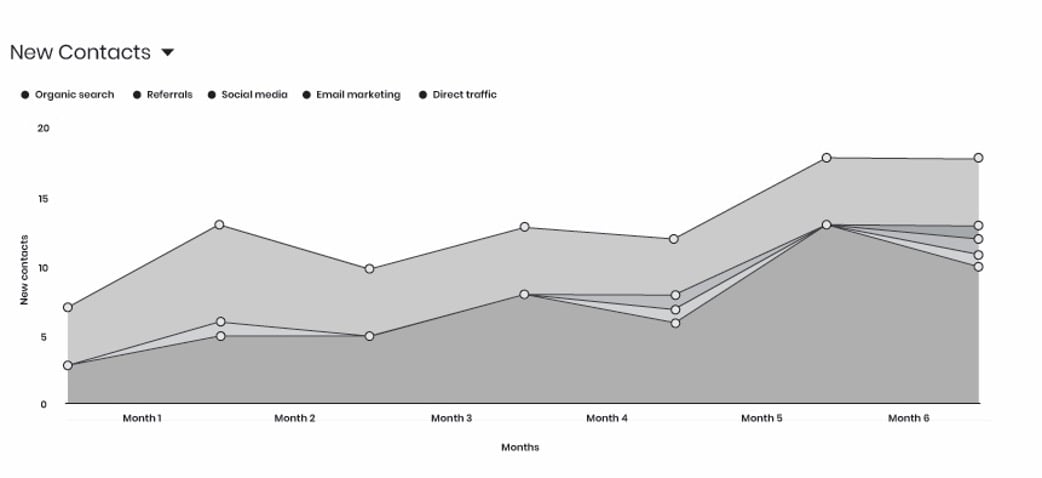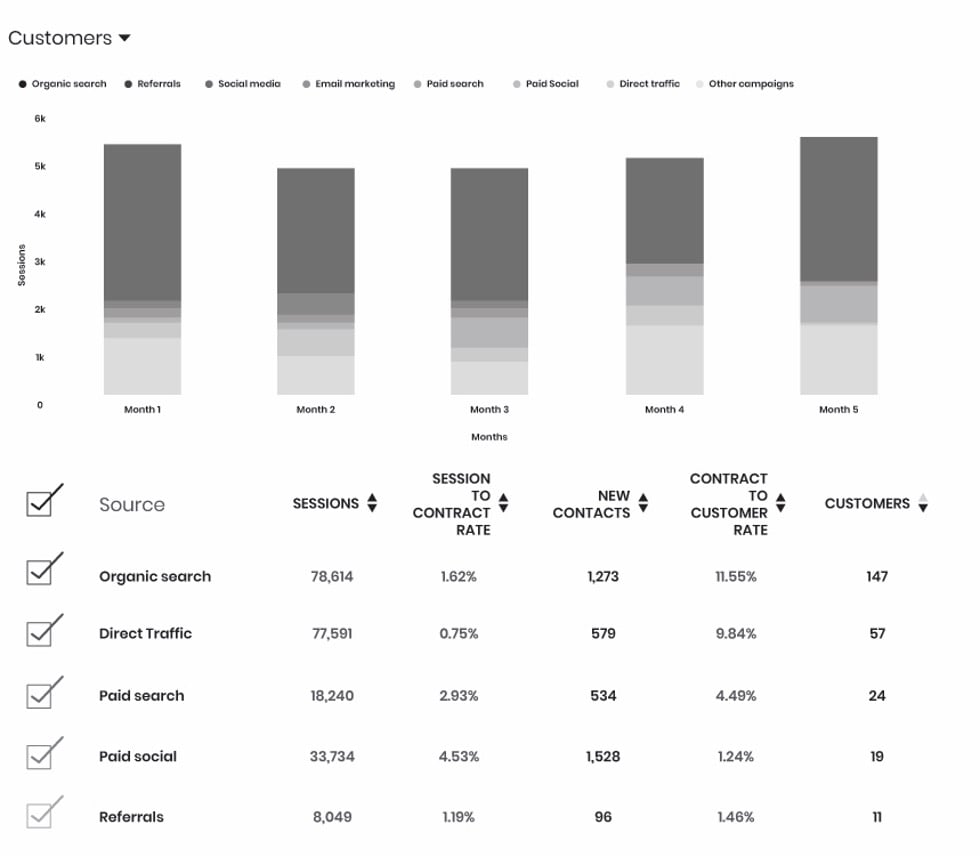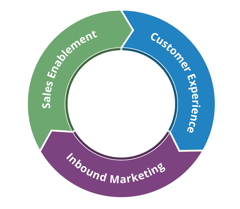Lead generation and customer acquisition are intricately connected, forming crucial components of a company's growth strategy. Lead generation is identifying and attracting potential customers (leads) who have expressed interest in a product or service, while customer acquisition is converting those leads into paying customers. When looking at lead generation and customer acquisition metrics, it's essential to determine how you look at those numbers independently and how they are connected to amplify your revenue growth.
Lead Generation:
Tracking the number of new qualified leads and subscribers is essential because website visitors who become prospects are interested in speaking with your company regarding your products and services. You always want this metric to align with the number of "leads per month" goal you previously set. As you continue to meet and exceed your goals and want to continue to grow, you’ll want to increase your target monthly lead goal number. The more qualified leads in your database means the more qualified opportunities you can send to the sales team.
How often should you track this metric? Weekly.
Practical Application:
The following is an example from a professional services firm showing their new contact growth over time. You can see it’s a steady upward trend. This is the result of creating helpful content that prospects want to download. This chart shows leads by source type (i.e., organic, social, email, and more).

Customer Acquisition:
For any business owner or marketer, the number of new customers over time is one of the most important metrics to track. The ultimate goal of your marketing campaigns is to drive customers and revenue, so you must ensure your campaigns always lead to customer growth. As long as you measure your contacts’ progress from a subscriber to a lead to a customer in your Customer Relationship Management (CRM) tool, tracking your customer acquisition should be an easy reporting metric. Tracking by source type (i.e., organic, referral, social media, and email) will also give you valuable insight into what sources were the most effective at converting your prospects into customers.
How often should you track this metric? Monthly.
Note: If you are a B2C company with more monthly transactions, consider tracking the customer acquisition metrics weekly. It depends on your business model. The following shows how you can visually track your customers over time by source so that you can identify the website traffic and conversion sources driving the most customers for your organization.

As you can see, there are many metrics you can track for lead generation and customer acquisition. It's important not to get too overwhelmed with too much data. Focus on the important metrics to track, measure them over time, and see what is working and what needs to be optimized to continue to drive growth for your business.
Are you looking for ways to optimize your inbound strategy? The "book "Mastering Inbound Marketing: Your Complete Guide to Building a Results-Driven Inbound Strategy," written by Elyse Flynn Meyer, Owner & Founder of Prism Global Marketing Solutions, covers every aspect of the inbound marketing methodology, including the revenue generation trifecta of marketing, sales, and the customer experience. Check out the book to see how to most efficiently and effectively develop, implement, and maintain your inbound strategy.


__Square.png?width=250&height=250&name=Marketing_Hub_(1)__Square.png)




.png?width=250&name=diamond-badge-color%20(1).png)
